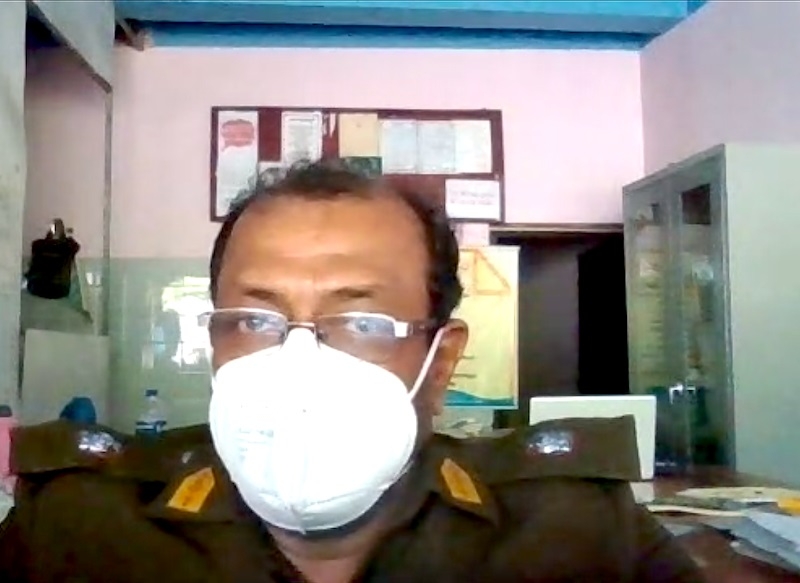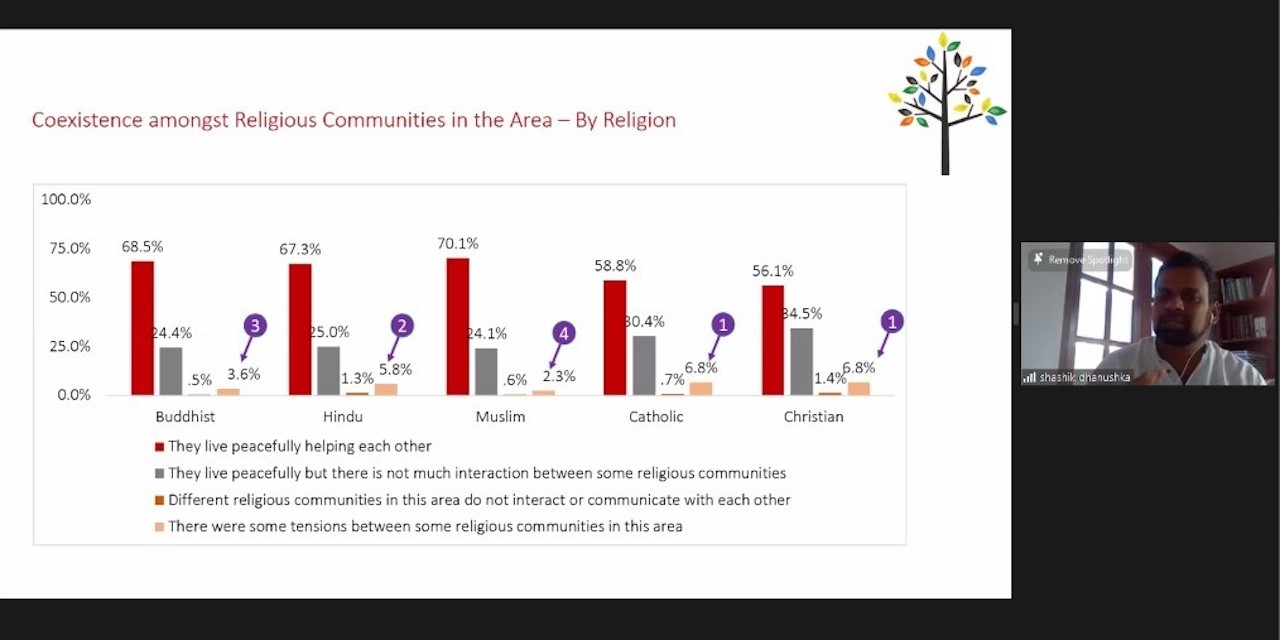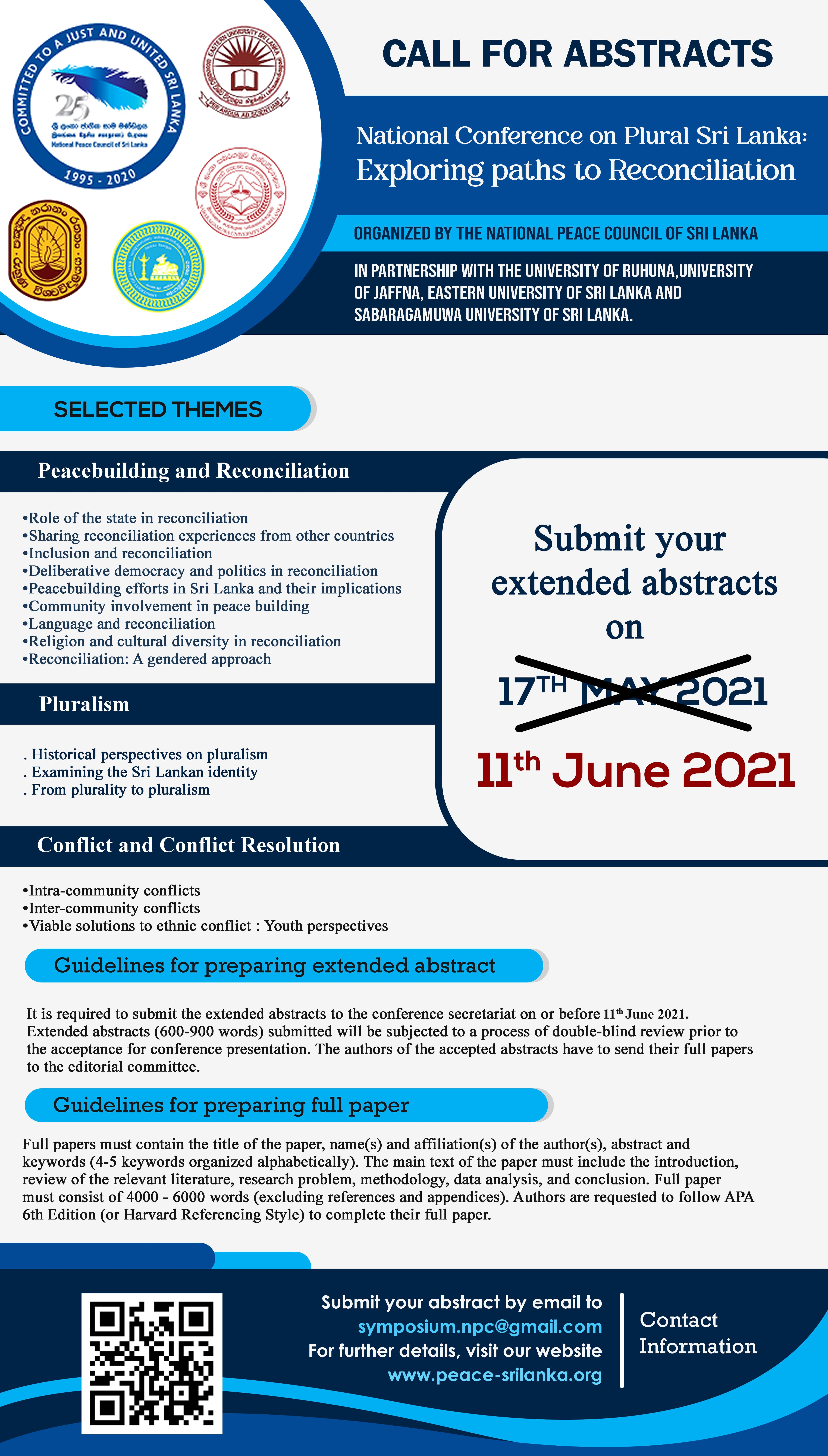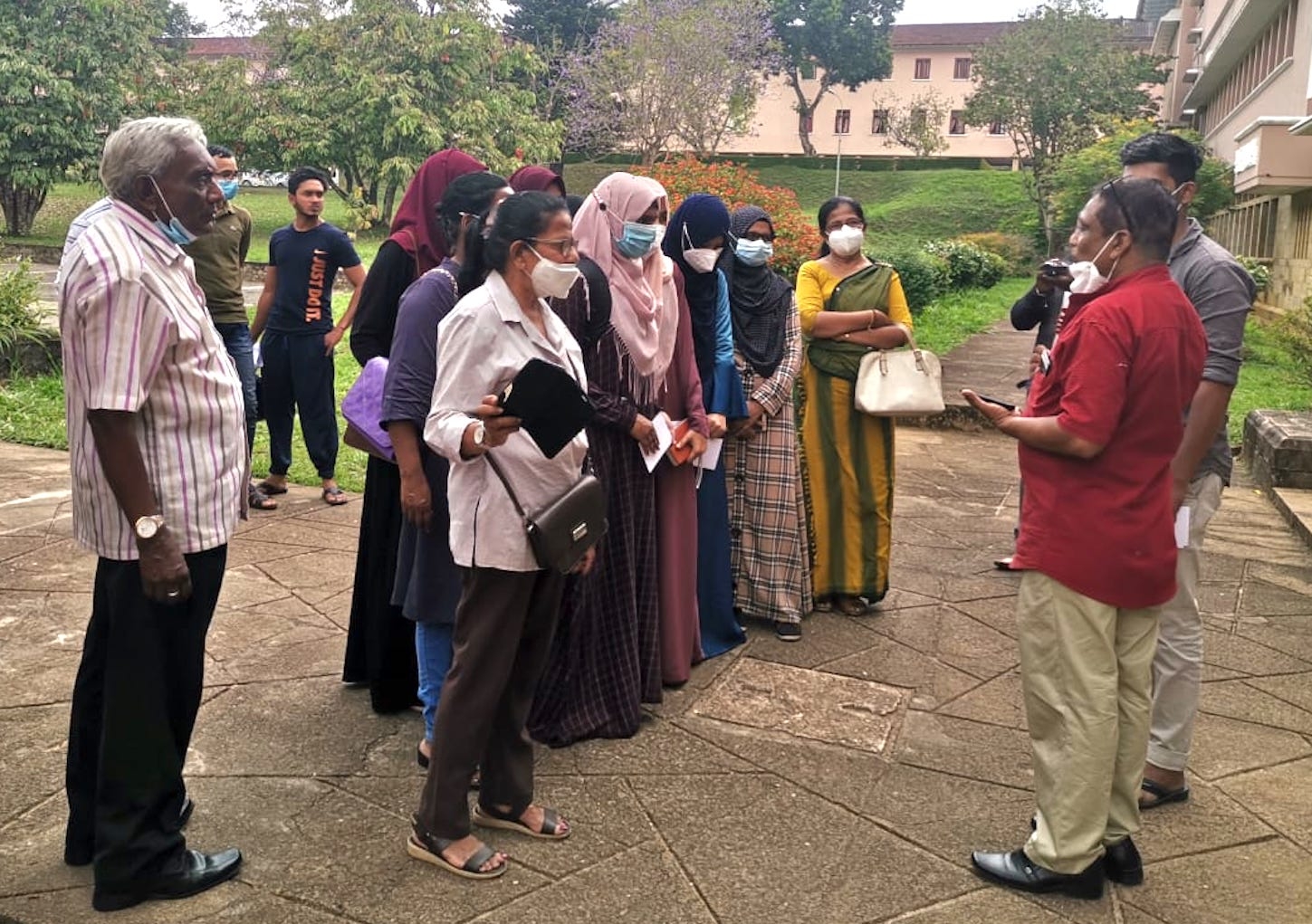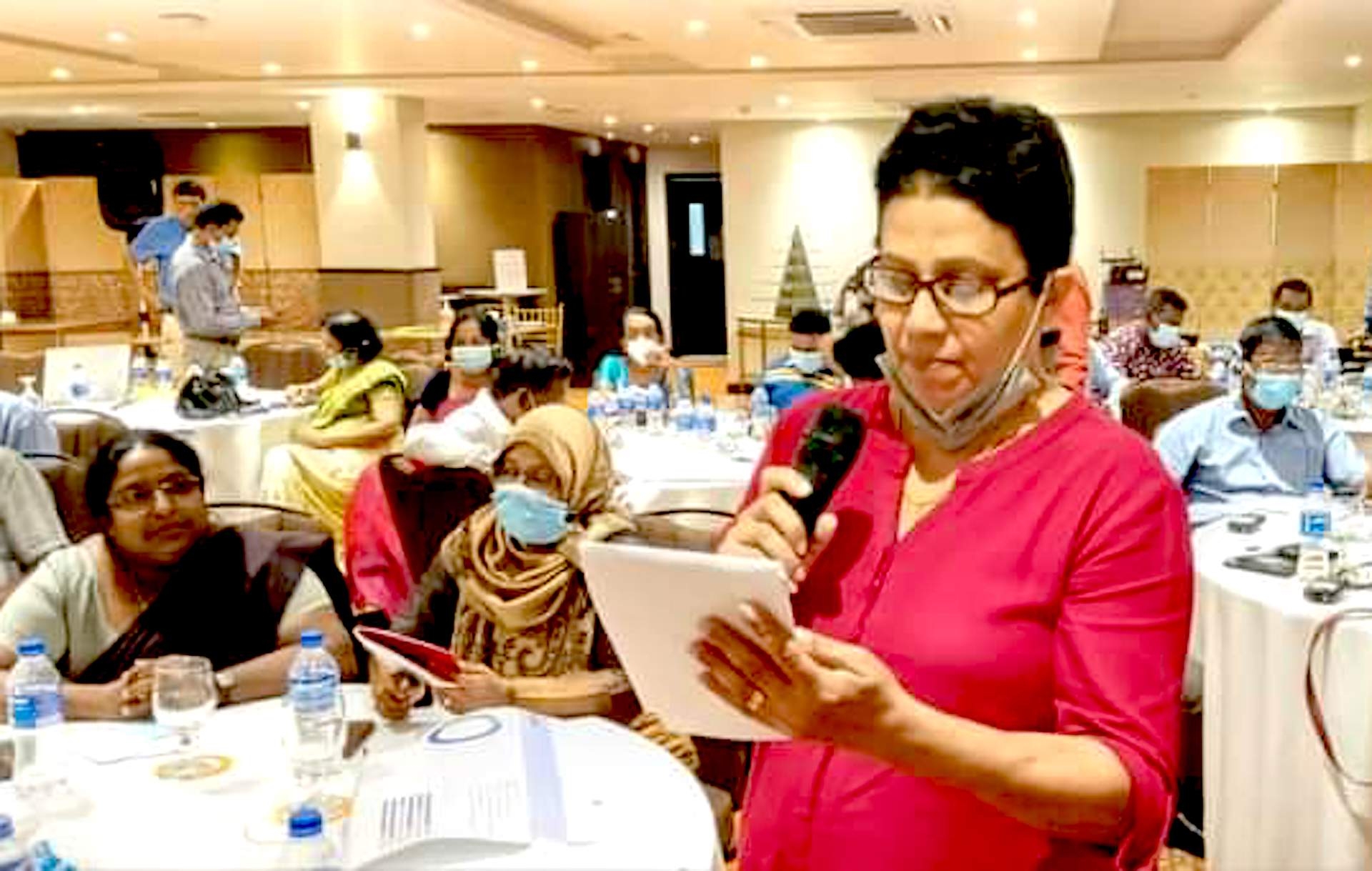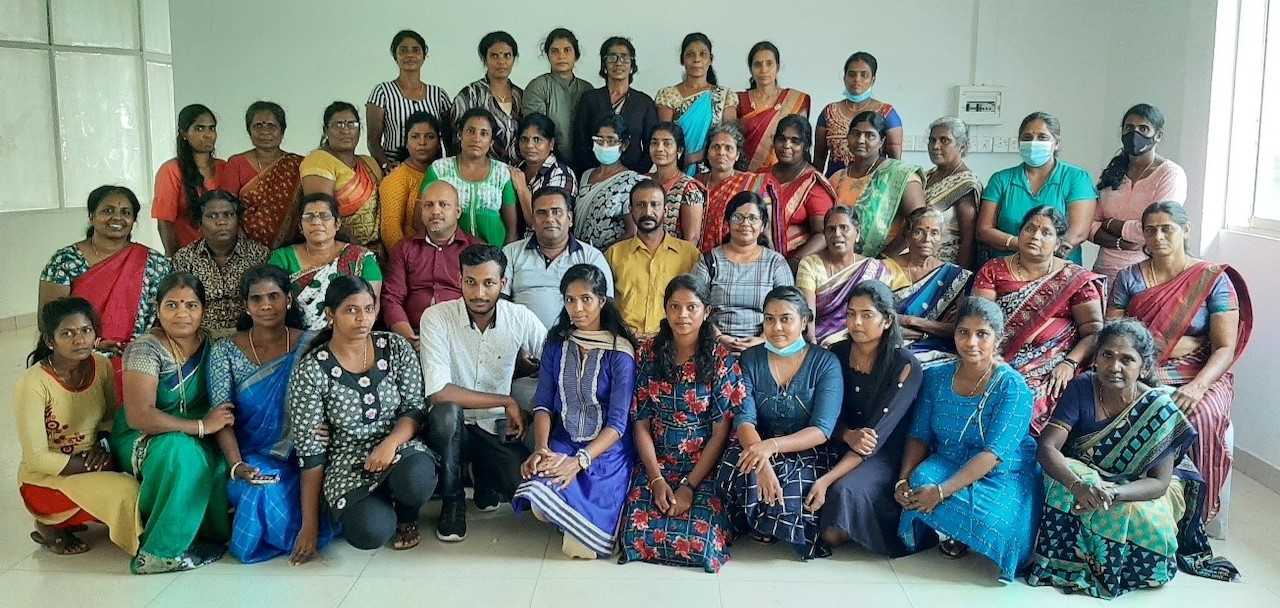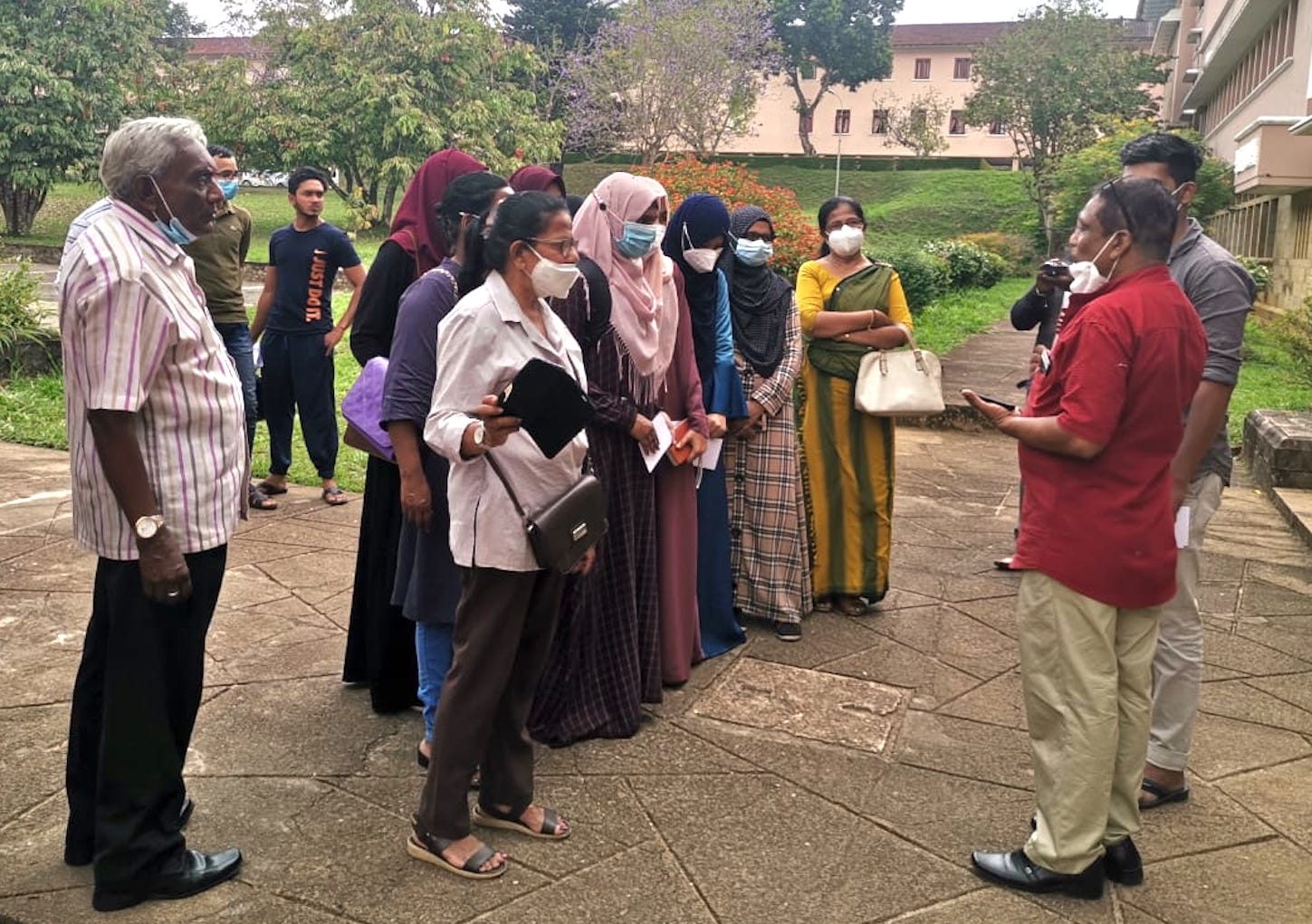In order to engage communities with the reconciliation process in the country, NPC carried out assessments to determine the needs of the communities that the Social Cohesion and
Reconciliation (SCORE) activity has already worked with. Coexistence Society (CES) members, District Inter Religious Committee (DIRC) members and Local Inter Religious Committee (LIRC) members are assisting SCORE at the grassroots level.
News
NPC’s Technical Assistance to Justice Institutions in Sri Lanka project held an online training programme on researching perceptions of hate speech for district coordinators and master trainers
from 12 districts.
Two online sessions on the findings of the survey on religious freedom were conducted under NPC’s Collective Engagement for Religious Freedom (CERF) project for the Trincomalee, Batticaloa, Panduwasnuwara and Kuliyapitiya Local Inter Religious Committees (LIRCs) with the participation of more than 50 members.
The global spread of the COVID-19 has been affecting and challenging the lives of millions of people around the world. While the focus of nations is on the economy and healthcare, NPC has been engaging communities at the grassroots level through online platforms.
Guidelines for Full Papers
- The International Conference on “Plural Sri Lanka: Exploration of paths to Reconciliation” accepts full papers from the authors.
- Full papers must contain the title of the paper, name(s) and affiliation(s) of the author(s), abstract and keywords (3-5 keywords organized alphabetically).
- The main text of the paper must include the introduction, statement of the research problem, objectives of the study, scope and significance of the study, review of the relevant literature, research methodology, results and discussion, and conclusions.
- Full paper must be consisted of a minimum of 4000 - 6000 words (excluding references and appendices) with a brief abstract of less than 300 words.
- The paper must be typed using as follows
English - Microsoft Word: Times New Roman; font size 12; double-spaced.
Sinhala – Microsoft Word: FM Abaya; font size 12; double-spaced.
Tamil – Microsoft Word: Bamini / Baamini; font size 12; double-spaced. - Use letters for numbers from one to ten and numerals from 11 onwards; but use numerals or letters consistently in range or series of numbers, e.g. 5 to 10. Use British (labour) spelling consistently.
- The titles of figures or tables should make bold, and should be placed on the top. The notes and sources should be mentioned below each figure or table. The figures and tables should be numbered consecutively and separately.
- Column headings should clearly define the data presented.
- Table borders should be 3⁄4 point and simple.
- Figures or photos should be incorporated into the text in jpg files with concise information about titles, notes and sources.
- Use either footnotes or endnotes; these should be in a standard MS Word format.
- All quoted and paraphrased intellectual property of other authors as well as other work of the contributing author(s) must be properly referenced.
- The work cited in the text should be indicated as follows: (Ratnayake, 2005:12) or (Richards & Carol, 1990: 10-15) i.e. author(s), year of publication: page number(s).
- Use ‘et al’ when citing a work by more than two authors, but include all the authors under References. To distinguish citations of different work published in the same year by a same author, use letters, i.e. (Muller, 2005a; 2005b).
- All work cited in the text, including sources for tables and figures must be listed alphabetically under References.
Use the APA (6th Edition) style for references and citations. - Titles and headings should be brief and clear, and made bold.
- Longer quotations should be indented and single-spaced without quotation marks.
- Non-English terms should be in italics, e.g. kurakkan or sine qua non.
- Date format used in text should be as 6 April 2021.
- In text, use either ‘percent’ or % consistently.
- Use letters for numbers from one to ten and numerals from 11 onwards; but use numerals or letters consistently in range or series of numbers, e.g. 5 to 10. Use British (labour) spelling consistently.
- The titles of figures or tables should make bold, and should be placed on the top. The notes and sources should be mentioned below each figure or table. The figures and tables should be numbered consecutively and separately.
- Column headings should clearly define the data presented.
- Table borders should be 3⁄4 point and simple.
- Figures or photos should be incorporated into the text in jpg files with concise information about titles, notes and sources.
- Use either footnotes or endnotes; these should be in a standard MS Word format.
- All quoted and paraphrased intellectual property of other authors as well as other work of the contributing author(s) must be properly referenced.
- The work cited in the text should be indicated as follows: (Ratnayake, 2005:12) or (Richards & Carol, 1990: 10-15) i.e. author(s), year of publication: page number(s).
- Use ‘et al’ when citing a work by more than two authors, but include all the authors under References. To distinguish citations of different work published in the same year by a same author, use letters, i.e. (Muller, 2005a; 2005b).
- All work cited in the text, including sources for tables and figures must be listed alphabetically under References.
- Use the APA (6th Edition) style for references and citations.
- The hasty process adopted failed to uphold the right to information of the people.
- Parliamentarians were not given adequate time to review the revised version of the Bill.
- Establishment and inadequate oversight of offshore banks and companies could lead to Port City attracting money laundering and illicit financial flows.
- Lack of public access to beneficial ownership information could lead to Port City becoming a secrecy jurisdiction that provides a safe haven for proceeds of crime.
- Sri Lanka faces the risk of being downgraded by the FATF due to the Port City.
A campaign to spread awareness about hate speech among university students, lecturers and professors at Peradeniya University was conducted by NPC’s Technical Assistance to Justice Institutions in Sri Lanka project.
A progress review meeting to discuss the results of a capacity assessment of NPC’s 17 district partner organizations was held in Colombo under the Plural Action for Conflict Transformation (PACT) project, which is funded by Misereor and Cafod. Participants discussed their ideas for the way forward as civil society organizations amid new challenges.
NPC conducted out a training programme on research for 31 students from the Eastern, Sabaragamuwa and Jaffna universities under its Creative Youth Engagement for Pluralism (C-YEP) project. Participants chose research as the tool to raise awareness and influence the public discourse on pluralism and inter community relations.
In Sri Lanka, sectarian politics has polarised communities so much that politics has become a frustrating practice. However, democracy will not endure and flourish unless people can overcome these frustrations and keep believing in the concept.
A progress review meeting to discuss the results of a capacity assessment of NPC’s 17 district partner organizations was held in Colombo under the Plural Action for Conflict Transformation (PACT) project, which is funded by Misereor and Cafod. Participants discussed their ideas for the way forward as civil society organizations amid new challenges.
NPC’s Executive Director Dr. Jehan Perera delivered the annual memorial lecture organized by the Thanthai Chelva Memorial Trust in Jaffna on the topic of “Moderating Peace - Unifying the Paths to Reconciliation.” The lecture commemorates the late leader of the Ilankai Thamil Arasu Kachchi (IITAK) S.J.V. Chelvanayakam who was the dominant Tamil leader of his era. Among his notable contributions was negotiating the Bandaranaike-Chelvanayakam Pact of 1957 with Prime Minister S.W.R.D. Bandaranaike.
Weligama Local Inter Religious Committee (LIRC) organized a commemoration event on April 21 to remember the victims of Easter Sunday attacks at the Shrine of Christ the Healer. Buddhist, Muslim and Catholic religious leaders of the LIRC attended in a vigil to commemorate those who died and those who were injured.
Two training programmes on the rule of law were conducted for the Trincomalee and Batticaloa Local Inter Religious Committees (LIRCs), including religious leaders and police officers, aimed at helping participants to understand rule of law and religious freedom while explaining domestic and international legal framework and legal provisions available to protect a citizen’s religious rights.
Four focus group discussions were conducted with the public and state officials in Matara and Batticaloa under NPC’s project Sustaining Peace Through Pluralism and Inclusive Service Delivery.
The project, conducted in partnership with the Jaffna, Sabaragamuwa, Ruhuna and Eastern Universities, is to set up certificate courses on pluralism and inclusive service delivery for local level state officials.
Under the Social Cohesion and Reconciliation (SCORE) Activity, NPC organized six training programmes on Resilient Communities Through Everyday Democracy Module in Kandy, Mullaitivu, Ampara, Kilinochchi and Batticaloa for 159 participants including coexistence society members, Local Inter Religious Committee members, District Inter Religious Committee members and 59 community leaders. Imran Nafeer conducted the training programme to enhance the participants' basic understanding of a democratic society and its values, to brainstorm and recall learnings from participants' past on a value-based democratic society and to identify key issues and areas to be focused on.

